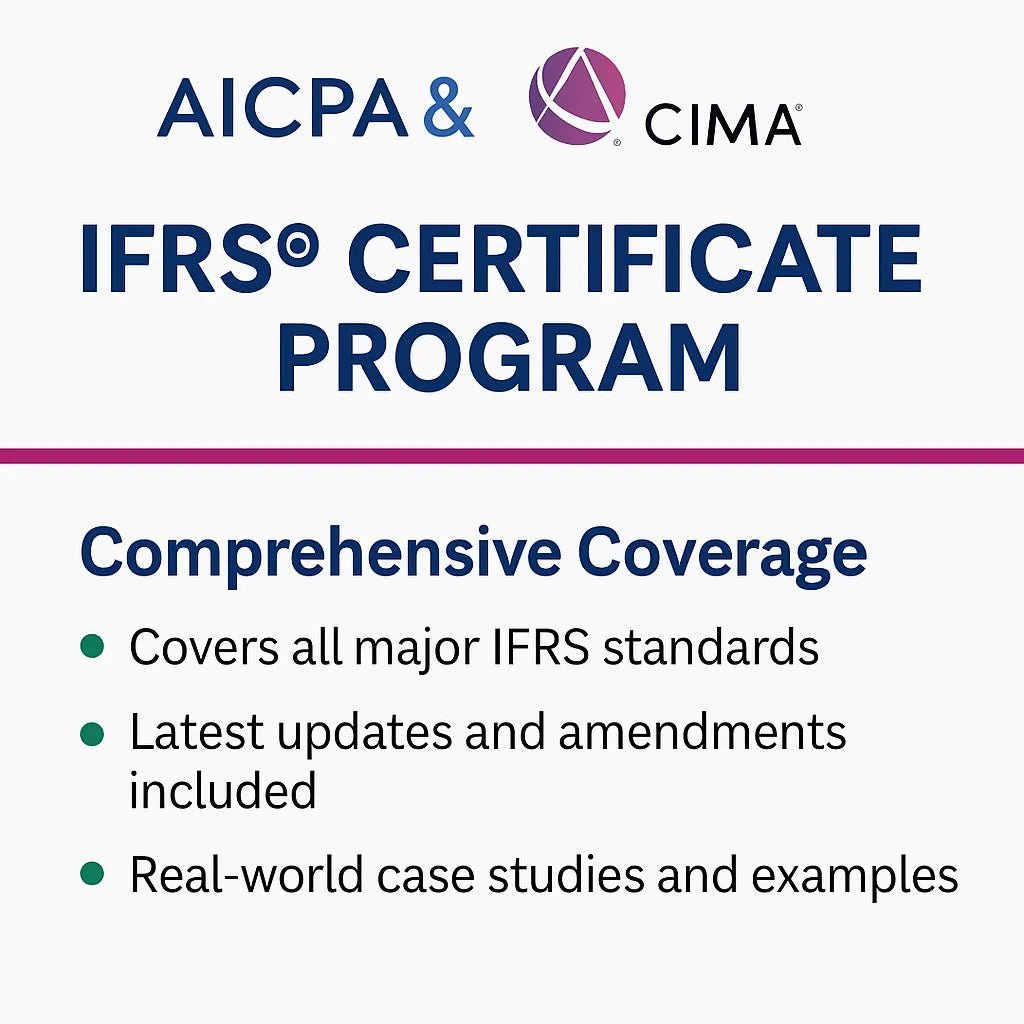Days Inventory Outstanding: Key to Inventory Success
Days Inventory Outstanding: Manage Your Inventory Effectively
Days Inventory Outstanding (DIO) is a critical metric that businesses use to measure the efficiency of their inventory management. It reveals how long, on average, a company holds inventory before selling it, offering valuable insight into cash flow, supply chain performance, and operational effectiveness.
In this guide, we’ll explain everything you need to know about DIO—its definition, formula, significance, industry benchmarks, and strategies to improve it. Whether in retail, manufacturing, or any other sector that relies on inventory, understanding and mastering DIO can drive long-term business success. Stay with us to learn how to calculate DIO, analyze trends, and apply actionable tactics for better inventory control in the year ahead.
What is Days Inventory Outstanding (DIO)?
Definition of Days Inventory Outstanding
Days Inventory Outstanding (DIO) is a key financial metric that measures how many days a company takes to sell or convert its inventory into finished goods. It indicates the efficiency of inventory management, reflecting how long stock is tied up before generating revenue. A lower DIO means faster inventory turnover, which suggests a more efficient process.
Understanding the Role of DIO in Business Operations
DIO plays a crucial role in determining a company's operational performance. Analyzing this metric, businesses can optimize their cash flow and minimize storage costs. A high DIO may indicate excess inventory or slow sales, while a DIO that is too low might lead to stockouts and missed sales opportunities. Therefore, maintaining a balanced DIO improves profitability, production efficiency, and customer satisfaction.
How to Calculate Days Inventory Outstanding
DIO Formula: Step-by-Step Guide
The formula to calculate Days Inventory Outstanding is as follows:
DIO = (Average Inventory / Cost of Goods Sold) × 365
Here's a breakdown of each component:
- Average Inventory: The mean value of inventory during a specific period. It is calculated as:
- (Opening Inventory + Closing Inventory) / 2
- Cost of Goods Sold (COGS): The total direct costs incurred to produce goods sold during a period.
- 365: Represents the number of days a year for a full-period calculation.
This formula shows how long a company holds inventory before it is sold or utilized in production.
Example Calculation of Days Inventory Outstanding
Let’s calculate DIO using a sample scenario:
Example:
- Average Inventory: $50,000
- Cost of Goods Sold (COGS): $300,000
Step 1: Apply the formula:
DIO = (Average Inventory / COGS) × 365
DIO = (50,000 / 300,000) × 365
Step 2: Calculate the ratio:
DIO = 0.1667 × 365
DIO = 60.8 days
This means the company takes about 61 days to sell or convert its inventory into sales. This data can help managers identify potential inefficiencies in stock management and take corrective action.
Why Days Inventory Outstanding is Important
The Link Between DIO and Inventory Management Efficiency
DIO is a crucial metric that reflects how efficiently a company manages its inventory. It directly measures inventory turnover by indicating the number of days inventory remains unsold. Companies with optimized inventory processes generally have lower DIO, leading to faster sales cycles and better stock management. Conversely, a high DIO can indicate overstocking, slower sales, or inefficient inventory handling.
Impact of High or Low Days Inventory Outstanding
High DIO:
- It may indicate poor demand forecasting, excess inventory, or slow-moving stock.
- Increases holding costs, such as storage, insurance, and obsolescence risk.
Low DIO:
- Suggests efficient sales and inventory management.
- Reduces storage costs but may also increase the risk of stockouts if inventory is too low.
Finding the right balance is key to maintaining healthy cash flow and operational efficiency.
Global Benchmarks and Best Practices for Days Inventory Outstanding (DIO)
Days Inventory Outstanding (DIO) benchmarks can vary widely across industries and regions. Understanding these benchmarks is crucial for optimizing inventory management, cash flow, and profitability. Let’s explore global DIO trends, good vs. bad DIO ranges, and how practices differ by industry and region.
Global Averages and Key Insights for Days Inventory Outstanding
What is the global DIO range?
Depending on the business model, most industries maintain a DIO between 30 to 90 days.
- In high-DIO industries (e.g., automotive, machinery), DIO often exceeds 100 days due to long production cycles and large capital investments.
- Low DIO industries (e.g., retail, technology, FMCG): Inventory turnover is faster, requiring a DIO of under 60 days.
💡 Example: Automotive industries in Indonesia report an average DIO of 100 days (Soeraiya, 2013), while retail companies in South Korea aim for much shorter cycles (Jahng & Yang, 2012).
What is a Good DIO Range?
A DIO between 30 and 60 days is generally ideal for industries focused on fast inventory turnover, such as:
- Consumer goods
- FMCG (Fast-Moving Consumer Goods)
- Electronics and technology
Why is lower DIO better?
Companies with lower DIO demonstrate higher efficiency. A low DIO often means:
- Strong demand forecasting
- Faster product movement, preventing overstock
- Better working capital optimization
Source: Reis Costa & Ferreira, 2023
What is a Bad DIO Range?
A DIO above 100 days may indicate inefficiency, such as:
- Overstocking and slow-moving products
- High storage costs and tied-up capital
However, a higher DIO is expected and acceptable in industries with long production cycles (e.g., luxury goods or industrial machinery).
DIO Benchmarks by Region
-
Developing Countries:
- Challenge: Inefficient infrastructure and supply chains lead to longer inventory cycles.
- Impact: Higher DIO as companies hold buffer stock to mitigate supply disruptions (Goonatilake, 1990).
-
Advanced Economies:
- Strength: Automated systems and just-in-time (JIT) processes help reduce DIO.
- Result: Competitive industries maintain DIO under 60 days to improve cash flow and reduce holding costs.
How to Improve DIO for Business Growth
- Adopt automation and software to track inventory and turnover in real time.
- Implement demand forecasting models to reduce overstock and improve efficiency.
- Optimize supply chain logistics to shorten lead times and streamline deliveries.
Summary:
- A good DIO benchmark typically falls 30-60 days for high-turnover industries.
- Companies with lower DIO maximize profitability and cash flow by reducing holding costs and stockpiling.
- Industry type and regional factors heavily influence DIO benchmarks and practices.
By understanding these benchmarks, businesses can make better decisions to improve their inventory performance and financial health.
Factors Affecting Days Inventory Outstanding (DIO)
Days Inventory Outstanding (DIO) is influenced by multiple factors that vary by industry, business model, and economic conditions. Understanding these factors is crucial for optimizing inventory turnover and improving operational efficiency.
Inventory Management Practices
Efficient inventory control practices, such as just-in-time (JIT) systems, significantly reduce DIO by minimizing excess stock. Companies with robust inventory monitoring systems maintain shorter cycles, resulting in better cash flow and reduced holding costs.
Research Insight: Businesses using optimized inventory strategies have consistently lower DIO (Nadarajan et al., 2018).
Working Capital Management
Companies with poor working capital management often experience high DIO. This occurs when other metrics in the cash conversion cycle, such as Days Sales Outstanding (DSO) or Days Payable Outstanding (DPO), are imbalanced. Inefficient turnover and misaligned payment cycles can tie up capital in inventory, extending DIO.
Source: Costa & Ferreira, 2023.
Industry Characteristics
Different industries naturally maintain varying DIO benchmarks:
- Capital-intensive industries (e.g., automotive and construction) typically have longer DIO due to complex supply chains and lengthy production cycles.
- Fast-Moving Consumer Goods (FMCG): Require shorter DIO due to rapid inventory turnover and consumer demand.
Research Example: Industries with higher product velocity, like FMCG, have shorter DIO than capital-heavy sectors (Vo & Ngo, 2023).
Product Shelf Life
Industries dealing with perishable goods, such as food and agriculture, need faster inventory turnover to prevent product wastage and expiration. This results in lower DIO benchmarks. Conversely, industries with non-perishable goods can afford longer inventory cycles.
Supporting Study: Firms in the perishable goods sector optimize inventory for rapid turnover to reduce financial losses (Folinas & Shen, 2014).
Demand Forecast Accuracy
Inaccurate demand forecasts can lead to two key problems:
- Excess inventory: Increasing holding costs and extending DIO.
- Frequent stockouts: Disrupting operations and reducing customer satisfaction.
Companies that improve demand planning can significantly lower their DIO and improve inventory efficiency (Yusan & Handoyo, 2023).
Economic Conditions and Supply Chain Disruptions
During global crises or economic downturns, inventory movement slows, leading to higher DIO. Supply chain disruptions increase lead times and force businesses to hold more safety stock, resulting in delayed inventory turnover.
Case Insight: Many firms experienced extended DIO during supply chain challenges in recent economic crises (Reis Costa & Ferreira, 2023).
Inventory Costing Methods
Accounting methods can impact reported DIO. Companies using FIFO (First-In-First-Out) generally show lower DIO than those applying LIFO (Last-In-First-Out) due to differences in inventory valuation.
Research Highlight: Inventory valuation methods affect measuring inventory performance (Sousaraie & Didehkhani, 2016).
Technological Integration
Businesses implementing Enterprise Resource Planning (ERP) and real-time inventory tracking systems are better equipped to optimize inventory turnover. These technologies improve accuracy in demand planning, stock levels, and reorder points, reducing DIO.
Insight: Companies leveraging modern tech tools experience improved inventory cycles and lower DIO (Nurhidayat & Thamrin, 2023).
Corporate Governance
Strong corporate governance frameworks—such as board oversight and managerial accountability—often result in efficient inventory policies. This positively influences DIO by encouraging better inventory practices and reducing inefficiencies.
Study Insight: Firms with robust governance show improved inventory performance and lower DIO (Nadarajan et al., 2018).
Also read our blog on accounts interview questions
Days Inventory Outstanding vs. Related Metrics
DIO vs. Inventory Turnover Ratio
Semantic Keywords: "DIO vs inventory turnover," "inventory efficiency metrics comparison."
Though both metrics reflect inventory efficiency, they differ in how they present data:
- DIO: Measures the average number of days inventory is held before being sold.
- Inventory Turnover Ratio: Indicates how many times inventory is sold and replenished during a period.
For example, a business with an inventory turnover of 6 times yearly has a DIO of about 61 days (365 ÷ 6). Companies should track both metrics to gain a comprehensive view of inventory performance.
DIO vs. Days Sales Outstanding (DSO) and Days Payable Outstanding (DPO)
Semantic Keywords: "DIO vs DSO vs. DPO," "working capital metrics comparison."
These three metrics form the cash conversion cycle (CCC):
- Days Inventory Outstanding (DIO): Measures how extended inventory is held before being sold.
- Days Sales Outstanding (DSO): Tracks how long it takes to collect payment after a sale.
- Days Payable Outstanding (DPO): This shows how long a company takes to pay its suppliers.
A lower DIO combined with favorable DSO and DPO improves working capital by accelerating cash flow. Balancing these metrics ensures efficient operations and better liquidity management.
Real-World Examples of Days Inventory Outstanding
DIO in Retail Giants
Below are global case studies highlighting how various companies optimize their Days Inventory Outstanding (DIO) to improve efficiency and profitability.
1. Wal-Mart (U.S.)
DIO Benchmark: In the mid-1990s, Wal-Mart significantly reduced its inventory holding periods by adopting advanced inventory management techniques. These improvements helped maintain high service levels with minimal excess stock, improving cash flow and operational efficiency. Source: Chen et al., 2007
2. 7-Eleven (Japan)
DIO Strategy: By leveraging real-time inventory management and just-in-time (JIT) supply chain systems, 7-Eleven achieved significantly lower DIO than traditional retailers. Their ability to adjust inventory levels quickly based on demand helped reduce holding costs and improve agility in stock replenishment. Source: Chen et al., 2007
3. Giant Superstore (Malaysia)
DIO Practices: Giant Superstore employs techniques such as ABC inventory analysis and advanced inventory software to manage stock more efficiently. By focusing separately on high-priority and low-priority product categories, the store improved its inventory turnover and reduced the DIO for both fast- and slow-moving items. Source: Jayakumaran et al., 2020
4. Amazon (E-commerce Giant)
DIO Approach: Amazon’s strategy involves dynamic inventory models that use predictive analytics and a distributed network of fulfillment centers. These methods allow Amazon to minimize inventory days while maintaining rapid order fulfillment and a vast customer product selection. Source: Huang & Dou, 2008
5. Piccadilly Retail Chain (Eastern Europe)
DIO Trend: Piccadilly Retail Chain focuses on balancing inventory availability and supply chain efficiency. By optimizing inventory levels in fast-moving product categories, the chain minimizes disruptions and keeps DIO within competitive benchmarks. Source: Dimov, 2016
Common Mistakes in Interpreting Days Inventory Outstanding
Misunderstanding the DIO Formula Components
Errors in calculating DIO often stem from confusion over formula components. Common mistakes include:
- Incorrect Average Inventory: Using opening or closing inventory instead of averaging the two.
- Misidentifying COGS: Substituting total sales instead of the cost of goods sold.
- Period Mismatch: Applying COGS from a different period than the inventory balance.
- Ignoring Seasonal Factors: Failing to account for seasonal fluctuations in demand.
- Overlooking Inventory Types: Do not differentiate between raw materials, work-in-progress, and finished goods.
Ignoring Industry Benchmarks
DIO standards vary widely across industries. Ignoring this context can lead to poor performance evaluation. Examples include:
- Retail: A DIO of 30-60 days is typical due to high inventory turnover.
- Manufacturing: Due to production cycles, DIO might range from 90-180 days.
- Pharmaceuticals: High DIO is typical due to long product shelf lives.
- Technology: Fast-moving sectors may have lower DIO to avoid product obsolescence.
- Food & Beverage: Low DIO is critical to minimize spoilage risks.
How to Report and Monitor Days Inventory Outstanding
Setting Up Inventory Reports and KPIs
Steps to monitor DIO effectively:
- Define KPIs: Track DIO alongside turnover ratio, stockouts, and carrying costs.
- Use Software: Implement ERP or inventory management systems for automated reporting.
- Schedule Reviews: Conduct regular inventory audits and reports (e.g., monthly or quarterly).
- Segment Analysis: Analyze DIO separately for different product categories.
- Trend Monitoring: Identify and act on trends that indicate inefficiencies.
DIO Insights for Management and Stakeholders
DIO reports can guide strategic decisions by highlighting the following:
- Stock Management Performance: Helps detect inefficiencies like overstocking or slow-moving inventory.
- Cash Flow Insights: Indicates how much capital is tied up in inventory.
- Production Planning: Assists in aligning production schedules with demand forecasts.
- Supplier Management: Identifies opportunities to renegotiate lead times and order quantities.
- Competitiveness: Benchmarks performance against industry peers to identify areas for improvement.
FAQs on Days Inventory Outstanding
What is a Good Days Inventory Outstanding Ratio?
The ideal DIO depends on the industry and business model. Guidelines include:
- Retail: 30-60 days is standard to ensure fast turnover.
- Manufacturing: Due to complex production cycles, 90-180 days may be expected.
- Technology: A DIO below 60 days is preferable to reduce obsolescence risks.
- Pharmaceuticals: Longer DIO is acceptable due to extensive product testing and regulatory compliance.
- Food & Beverage: A DIO under 30 days is vital to prevent spoilage.
How Often Should Businesses Calculate DIO?
Semantic Keywords: "DIO calculation frequency," "inventory performance monitoring best practices"
Businesses should calculate DIO at regular intervals based on their needs:
- Monthly: Ideal for businesses with frequent inventory turnover, such as retail.
- Quarterly: Suitable for industries with stable demand cycles.
- Annually: Appropriate for long-cycle industries like heavy manufacturing.
- During Audits: Include DIO in comprehensive inventory audits to assess stock performance.
- Before Strategic Changes: Recalculate DIO when introducing new products or changing suppliers.
Conclusion: Mastering Days Inventory Outstanding for Long-Term Success
Summary of Key Takeaways on DIO
Semantic Keywords: "key points on days inventory outstanding," "inventory turnover summary"
Days Inventory Outstanding (DIO) is a vital indicator of inventory management efficiency. Here's a recap of the key points:
- Definition and Purpose: DIO measures the time inventory is held before being sold, which affects cash flow and operational efficiency.
- Calculation Formula: The DIO formula is:
- DIO = (Average Inventory / Cost of Goods Sold) × 365.
- Impact on Business: A high DIO can indicate inefficiencies in inventory turnover, while a low DIO may suggest optimal stock management or possible understocking.
- Industry Benchmarks: Comparing DIO to industry standards helps assess whether your business manages inventory effectively.
- Optimization Strategies: Businesses can reduce DIO through better forecasting, inventory tracking, and supply chain improvements.
Next Steps to Improve Inventory Management
Semantic Keywords: "improve DIO next steps," "inventory management improvements"
For businesses looking to improve their DIO, here are practical next steps:
- Monitor KPIs: Regularly track inventory-related metrics such as DIO, turnover ratio, and carrying costs.
- Leverage Technology: ERP and inventory management software automates tracking and reporting.
- Enhance Demand Forecasting: Implement forecasting models to align stock levels with customer demand better.
- Optimize Supplier Relationships: Collaborate with suppliers to reduce lead times and improve replenishment processes.
- Conduct Regular Audits: Periodic inventory audits help identify inefficiencies and opportunities for process improvements.
By mastering DIO, businesses can achieve better inventory control, improve cash flow, and support sustainable growth.
FAQs
ACCA blogs
Follow these links to help you prepare for the ACCA exams
IFRS blogs
Follow these blogs to stay updated on IFRS
Formats
Use these formats for day to day operations
- Account closure format
- Insurance claim letter format
- Transfer certification application format
- Resignation acceptance letter format
- School leaving certificate format
- Letter of experience insurance
- Insurance cancellation letter format
- format for Thank you email after an interview
- application for teaching job
- ACCA PER examples
- Leave application for office
- Marketing manager cover letter
- Nursing job cover letter
- Leave letter to class teacher
- leave letter in hindi for fever
- Leave letter for stomach pain
- Leave application in hindi
- Relieving letter format
Interview questions
Link for blogs for various interview questions with answers
- Strategic interview questions
- Accounts payable interview questions
- IFRS interview questions
- CA Articleship interview questions
- AML and KYC interview questions
- Accounts receivable interview questions
- GST interview questions
- ESG Interview questions
- IFRS 17 interview questions
- Concentric Advisors interview questions
- Questions to ask at the end of an interview
- Business Analyst interview questions
- Interview outfits for women
- Why should we hire you question
leave application format
- Leave application for office
- Leave application for school
- Leave application for sick leave
- Leave application for marriage
- leave application for personal reasons
- Maternity leave application
- Leave application for sister marriage
- Casual leave application
- Leave application for 2 days
- Leave application for urgent work
- Application for sick leave to school
- One day leave application
- Half day leave application
- Leave application for fever
- Privilege leave
- Leave letter to school due to stomach pain
- How to write leave letter
Insurance blogs
- Sample letter of appeal for reconsideration of insurance claims
- How to increase insurance agent productivity
- UAE unemployment insurance
- Insurance cancellation letter
- Insurance claim letter format
- Insured closing letter formats
- ACORD cancellation form
- Provision for insurance claim
- Cricket insurance claim
- Insurance to protect lawsuits for business owners
- Certificate holder insurance
- does homeowners insurance cover mold
- sample letter asking for homeowner right to repair for insurance
- Does homeowners insurance cover roof leaks













Leave a comment